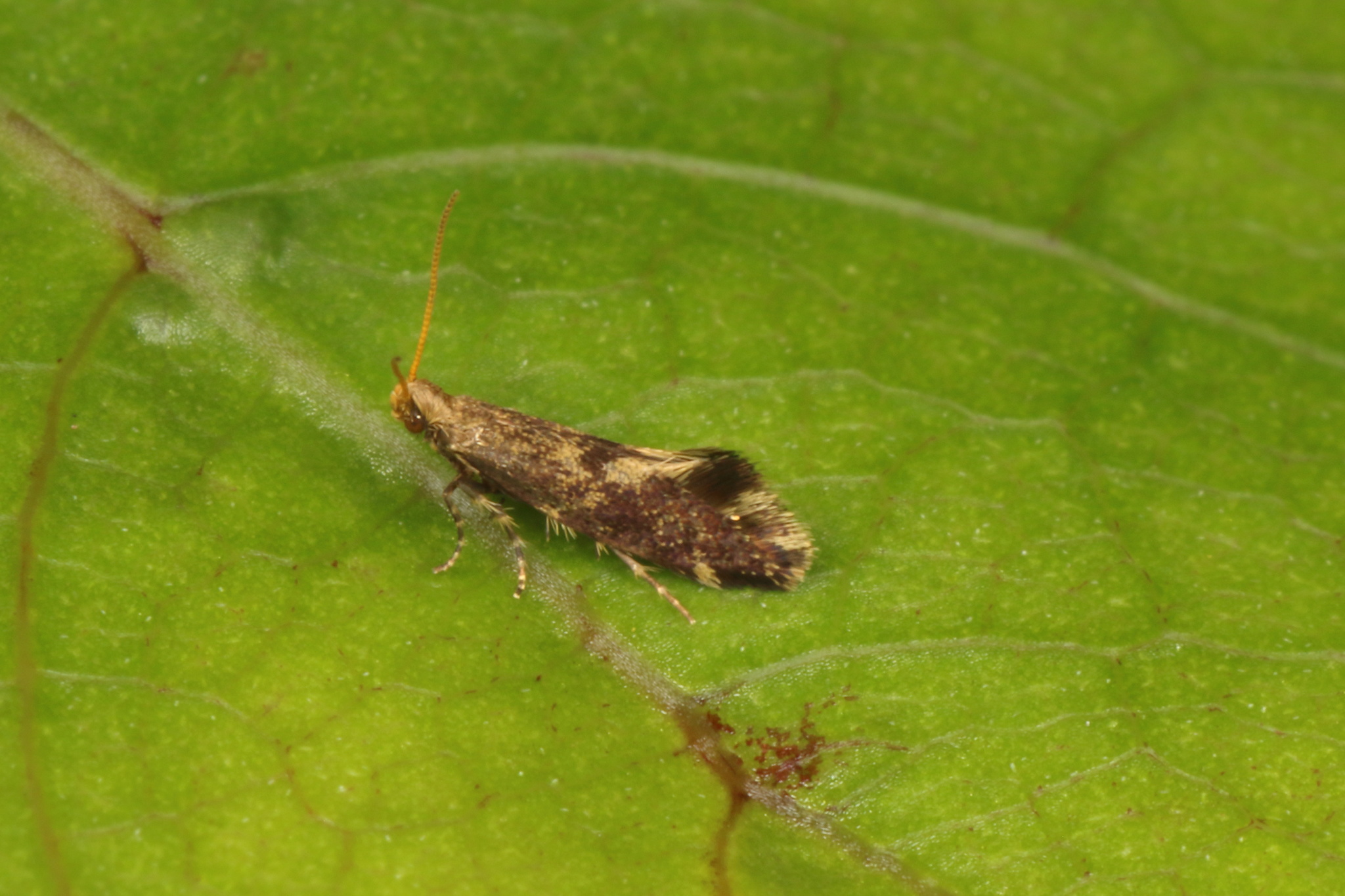Mnesarchaea Fusca on:
[Wikipedia]
[Google]
[Amazon]
''Mnesarchaea fusca'' is a species of primitive
 The larva of this species can reach a length of 6 mm and is bright green when young, turning a brownish-green when mature.
Philpott originally described this species as follows:
''M. fusca'' is small and dark brown in colour with patches of ochreous-yellow on its forewings. The maximum length of the forewing is 3.5 mm. The genitalia of ''M. fusca'' is quite distinct from similar species such as '' M. hudsoni'' and '' M. fallax''.
The larva of this species can reach a length of 6 mm and is bright green when young, turning a brownish-green when mature.
Philpott originally described this species as follows:
''M. fusca'' is small and dark brown in colour with patches of ochreous-yellow on its forewings. The maximum length of the forewing is 3.5 mm. The genitalia of ''M. fusca'' is quite distinct from similar species such as '' M. hudsoni'' and '' M. fallax''.
moth
Moths are a paraphyletic group of insects that includes all members of the order Lepidoptera that are not butterflies, with moths making up the vast majority of the order. There are thought to be approximately 160,000 species of moth, many of w ...
s in the family Mnesarchaeidae. This species was first described by Alfred Philpott
Alfred Philpott (15 December 1870 – 24 July 1930) was a New Zealand museum curator, entomologist and writer. He was born in Tysoe, Warwickshire
Warwickshire (; abbreviated Warks) is a county in the West Midlands region of England. The ...
in 1922, and is endemic to New Zealand
New Zealand ( mi, Aotearoa ) is an island country in the southwestern Pacific Ocean. It consists of two main landmasses—the North Island () and the South Island ()—and over 700 smaller islands. It is the sixth-largest island count ...
. The larvae of the species is bright green when young but turns a brownish green when mature. Adults of this species are small and dark brown with patches of reddish yellow on its forewings. This species is found in Nelson
Nelson may refer to:
Arts and entertainment
* ''Nelson'' (1918 film), a historical film directed by Maurice Elvey
* ''Nelson'' (1926 film), a historical film directed by Walter Summers
* ''Nelson'' (opera), an opera by Lennox Berkeley to a lib ...
and Marlborough Sounds
The Marlborough Sounds are an extensive network of sea-drowned valleys at the northern end of the South Island of New Zealand. The Marlborough Sounds were created by a combination of land subsidence and rising sea levels. According to Māori m ...
. It inhabits poorly lit forest ravines and gullies or areas near shaded waterways. Adults are on the wing between December to February.
Taxonomy
This species was first described by Alfred Philpott in 1922 and named ''Mnesarchaea fusca''. Theholotype
A holotype is a single physical example (or illustration) of an organism, known to have been used when the species (or lower-ranked taxon) was formally described. It is either the single such physical example (or illustration) or one of several ...
specimen, collected by Philpott at Gouland Downs in what is now known as the Kahurangi National Park
Kahurangi National Park in the northwest of the South Island of New Zealand is the second largest of the thirteen national parks of New Zealand. It was gazetted in 1996 and covers , ranging to near Golden Bay in the north. Much of what was the ...
in February, is held at the New Zealand Arthropod Collection
The New Zealand Arthropod Collection is a collection of terrestrial invertebrates held by Maanaki Whenua – Landcare Research in Auckland, New Zealand.http://biocol.org/institutional-collection/new-zealand-arthropod-collection It specialises i ...
.
Description
 The larva of this species can reach a length of 6 mm and is bright green when young, turning a brownish-green when mature.
Philpott originally described this species as follows:
''M. fusca'' is small and dark brown in colour with patches of ochreous-yellow on its forewings. The maximum length of the forewing is 3.5 mm. The genitalia of ''M. fusca'' is quite distinct from similar species such as '' M. hudsoni'' and '' M. fallax''.
The larva of this species can reach a length of 6 mm and is bright green when young, turning a brownish-green when mature.
Philpott originally described this species as follows:
''M. fusca'' is small and dark brown in colour with patches of ochreous-yellow on its forewings. The maximum length of the forewing is 3.5 mm. The genitalia of ''M. fusca'' is quite distinct from similar species such as '' M. hudsoni'' and '' M. fallax''.
Distribution
This species is endemic to New Zealand. It is found in the Nelson and Marlborough Sounds districts. Although initially believed to have also been found in Wellington, those specimens are regarded as being distinct from ''M. fusca'' and are identified as ''M. hudsoni''. This change is based on the significant differences in the genitalia of the two species.Habitat
This species inhabits poorly lit forest ravines and gullies or areas near shaded waterways. ''M. fusca'' is often collected in the presence ofperiphyton
Periphyton is a complex mixture of algae, cyanobacteria, heterotrophic microbes, and detritus that is attached to submerged surfaces in most aquatic ecosystems. The related term Aufwuchs (German "surface growth" or "overgrowth") refers to the col ...
and can also be found near or on filmy ferns or ferns in the family Balechnaceae.
Behaviour
The adults of this species are on the wing from December to February.References
{{Taxonbar, from=Q6885917 Moths described in 1922 Endemic fauna of New Zealand Moths of New Zealand Mnesarchaeoidea Taxa named by Alfred Philpott Endemic moths of New Zealand